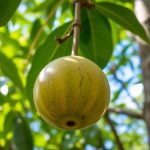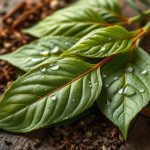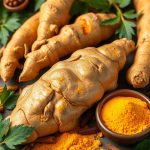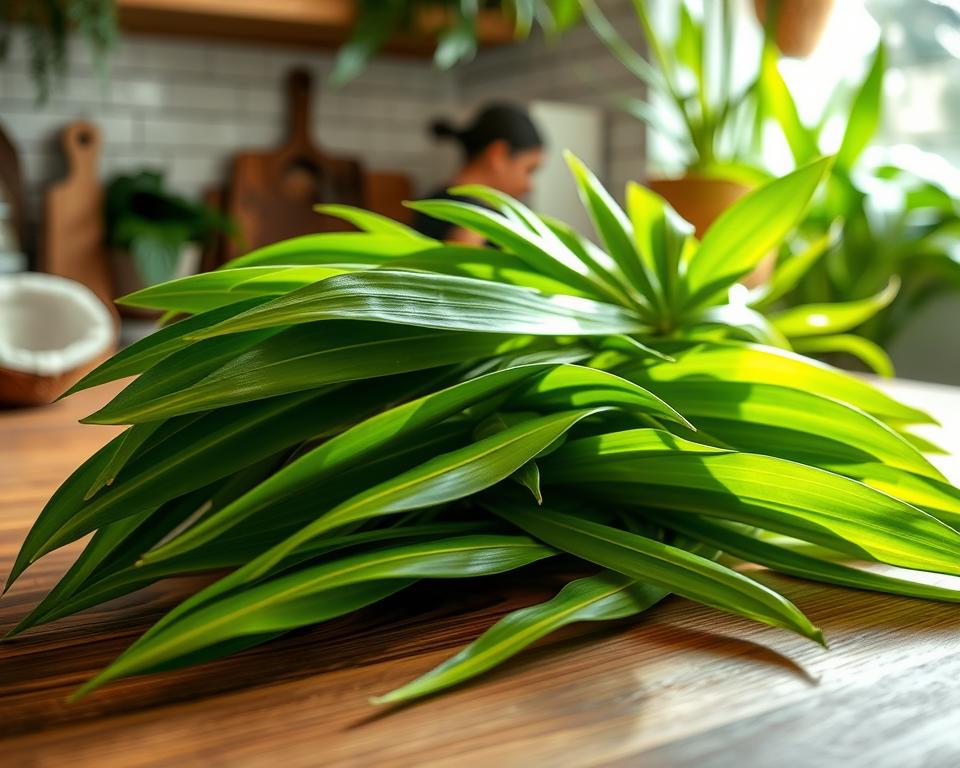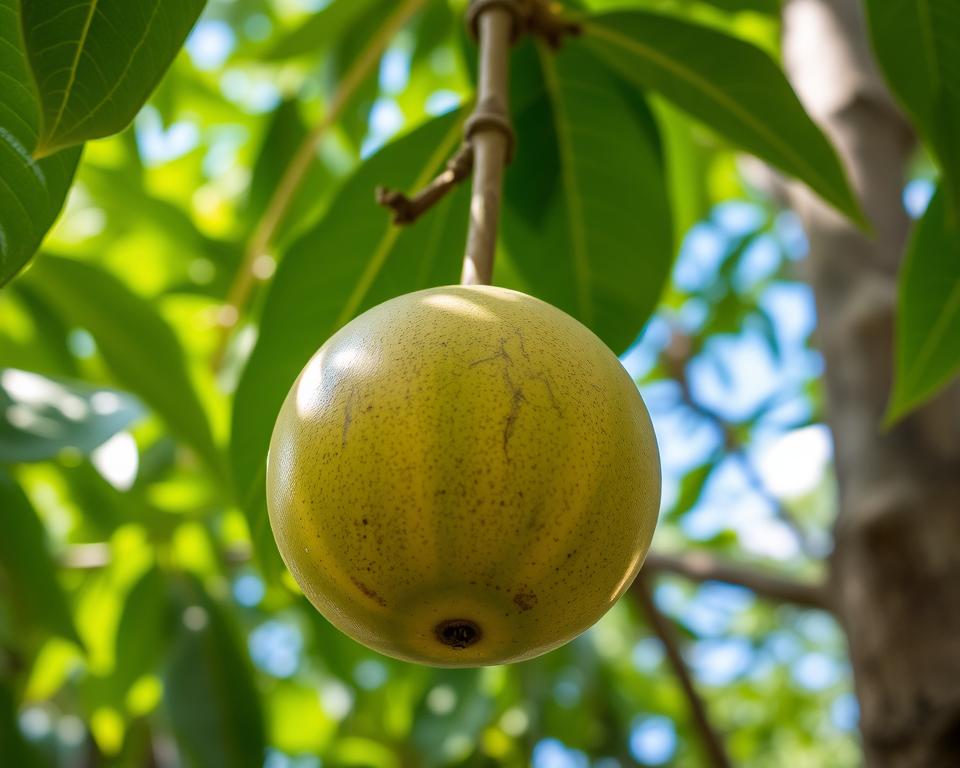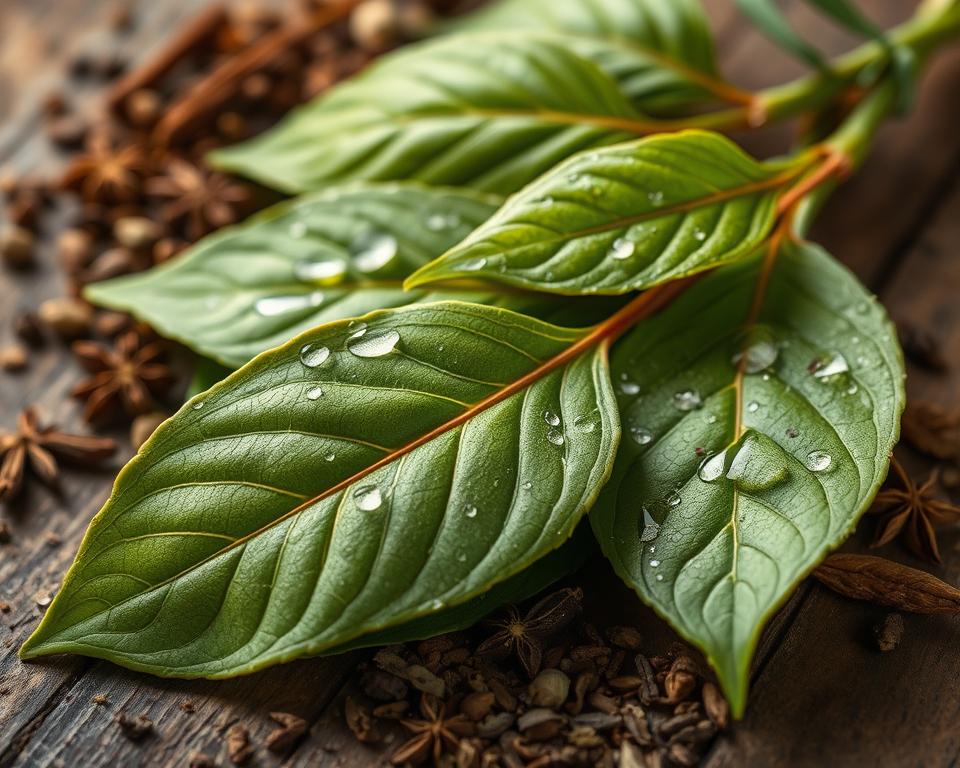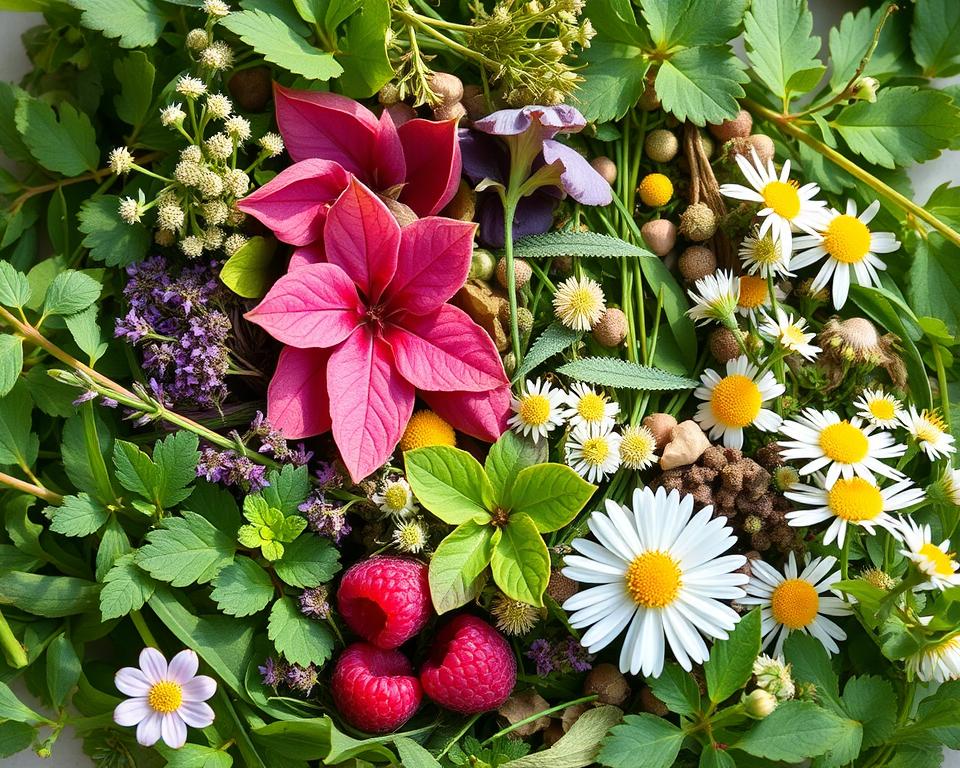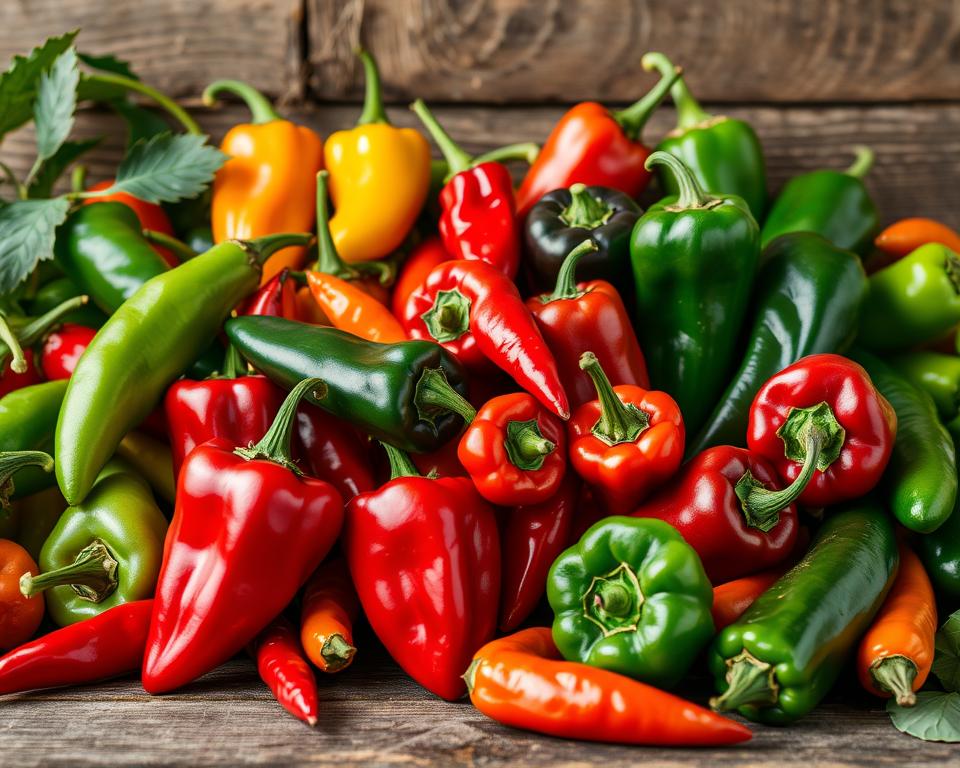Pandan leaf, also known as “screwpine,” is a tropical plant from Southeast Asia. It’s loved in many cuisines for its unique aroma and flavor. This leaf can make both sweet and savory dishes special.
It’s great in fragrant rice dishes and rich desserts. Pandan leaf turns simple ingredients into amazing dishes.
Read interesting things at : tosawakan
Key Takeaways
- Pandan leaf is a tropical plant native to Southeast Asia with a unique aroma and flavor.
- It is a versatile ingredient that can enhance both sweet and savory dishes.
- Pandan leaf is commonly used in Southeast Asian cuisines to add fragrance and flavor to a variety of dishes.
- The leaf can be used fresh, frozen, or dried, and pandan extract and powder are also available for convenience.
- Pandan leaf offers nutritional benefits and has been used in traditional medicine.
What is a Pandan Leaf?
The pandan leaf is a special ingredient in Southeast Asia’s food. It comes from the Pandanus plant and is found in Indonesia, Malaysia, Thailand, and the Philippines. This leaf is long and green, with a scent that mixes vanilla, coconut, and grass.
Origins and Description
The pandan leaf, also known as Pandanus amaryllifolius, grows in warm places. It can grow up to 3-5 meters tall. Its leaves are bright green, shiny, and have a special pattern.
Aroma and Flavor Profile
The pandan leaf is loved for its smell, which is like vanilla, coconut, and fresh grass. This smell comes from a compound called 2-Acetyl-1-pyrroline. It adds a sweet, floral taste to food, making it taste better.
“The pandan leaf is a true treasure of Southeast Asian cuisine, adding a unique and captivating aroma and flavor to countless dishes.”
Pandan Leaf in Southeast Asian Cuisine
Pandan leaf is a key ingredient in Southeast Asia’s food. It’s used in everything from Indonesian rice dishes to Thai desserts. This tropical plant is a big part of the region’s food culture.
In Indonesia, pandan leaf is used in nasi uduk and nasi lemak. These dishes are flavored with coconut and are very popular. The leaf adds a unique taste and smell to these dishes.
In Malaysia and Singapore, pandan leaf is used in kuehs. These are small pastries like onde-onde. They get their green color and special flavor from pandan.
| Dish | Cuisine | Pandan’s Role |
|---|---|---|
| Nasi Uduk | Indonesian | Fragrant rice dish infused with pandan leaf |
| Nasi Lemak | Malaysian | Coconut milk rice with pandan leaf |
| Onde-Onde | Southeast Asian | Chewy glutinous rice balls flavored with pandan |
Pandan leaf is not just for savory dishes. It’s also used in Thai desserts. It adds sweetness and a green color to custards, sticky rice, and drinks.
“The pandan leaf is a true culinary treasure of Southeast Asia, weaving its way through the region’s diverse cuisines and leaving an indelible mark on the palates of its people.”
The pandan leaf is loved in many forms. It’s in rice dishes, sweet treats, and drinks. It makes Southeast Asian cuisine special and enjoyable.
Culinary Uses of Pandan Leaf
The pandan leaf is very versatile. It’s used in both sweet and savory dishes. It adds a unique flavor to many recipes.
In desserts, pandan’s aroma and taste make cakes, puddings, and ice creams special. It gives them a unique and enchanting flavor.
Desserts and Confections
Pandan leaf is key in Southeast Asian desserts. It’s used in pandan chiffon cake, pandan waffles, and pandan custard. It adds a delicate and aromatic touch.
It’s also used in pandan-infused sticky rice. This is a favorite in Malaysia and Thailand.
Savory Dishes
Pandan leaf is not just for sweets. It’s also used in savory dishes. In Asian cooking, it adds depth and aroma to rice.
It’s used in pandan-infused jasmine rice and pandan-coconut rice. Its flavor also goes well with curries, stir-fries, and other savory dishes.
“The versatility of pandan leaf extends beyond its floral aroma, allowing it to seamlessly integrate into both sweet and savory culinary creations, elevating the overall flavor and experience.”
Pandan Leaf: Nutritional Benefits
The pandan leaf is more than just a tasty ingredient. It’s packed with nutrients that boost your health. This tropical plant is full of vitamins, minerals, and antioxidants. It’s great for keeping you healthy and feeling good.
Pandan leaf is rich in vitamins A, C, and E. These vitamins help your immune system, skin, and eyes. It also has calcium, iron, and magnesium. These minerals are key for strong bones, energy, and nerve health.
| Nutrient | Amount per 100g of Pandan Leaf |
|---|---|
| Vitamin A | 7,056 IU |
| Vitamin C | 59.9 mg |
| Vitamin E | 1.4 mg |
| Calcium | 266 mg |
| Iron | 4.4 mg |
| Magnesium | 48 mg |
Pandan leaf also has plant compounds that fight inflammation and bacteria. These compounds help support your health. Adding pandan leaf to your meals can make them more nutritious and delicious.
“Pandan leaf is a true nutritional powerhouse, offering a wealth of essential vitamins, minerals, and antioxidants that can support overall health and well-being.”
Where to Find Pandan Leaf
Pandan leaf is a unique ingredient known for its aroma and green color. It comes in fresh, frozen, and dried forms. Knowing where to find these can help you use this tropical flavor in your cooking.
Fresh Pandan Leaves
Fresh pandan leaves are the best choice for their true flavor. You can find them in Asian grocery stores, specialty markets, or some big supermarkets. Look for leaves that are bright green, soft, and without spots.
Frozen Pandan Leaves
If fresh pandan is hard to find, frozen leaves are a good substitute. They are frozen quickly to keep their oils and smell. You can find them in the freezer of Asian or international stores. They keep a lot of the fresh flavor and smell.
Dried Pandan Leaf Powder or Extract
When fresh or frozen pandan leaves are not available, dried powder or extracts are a good choice. These are made by drying and grinding the leaves. They are easy to find online or in stores. While not as strong as fresh or frozen, they still add flavor to your dishes.
Pandan Extract: A Convenient Alternative
If you can’t find fresh or frozen pandan leaves, pandan extract is a great option. This liquid extract is made by soaking pandan leaves in water or alcohol. It packs a strong pandan flavor and aroma that you can add to many dishes. Pandan extract is used in baking, drinks, and as a natural food color.
Using pandan extract is much easier than working with fresh leaves. It lets you enjoy the pandan flavor without the extra work. You can add it to cakes, cookies, custards, and even some savory dishes. This makes it easy for both home cooks and chefs to add the pandan essence to their recipes.
Pandan extract is perfect for those who can’t get pandan leaves. It’s a reliable way to get the unique taste of this Southeast Asian herb. Whether you’re making a traditional pandan dessert or trying something new, this extract is a must-have in your kitchen.
“Pandan extract is a game-changer for those who love the flavor of pandan but don’t have easy access to the fresh leaves. It’s a versatile ingredient that can elevate both sweet and savory dishes.”
Pandan extract is also great as a natural food coloring. It gives dishes and drinks a vibrant green color. This is especially useful for those who want to avoid synthetic food colorings.
Whether you’re already a fan of pandan or new to it, pandan extract is a convenient and versatile choice. It’s a great way to explore the rich flavors of Southeast Asian cuisine.
Preparing and Using Pandan Leaf
Pandan leaf is a fragrant ingredient from Southeast Asia. It adds a unique flavor to dishes. Preparing and using it is easy and can make your food taste better.
There are many ways to use pandan leaf. You can chop it finely, bruise it, or tie it into knots. This releases its oils and adds a special flavor to your food.
Pandan leaf works well in many dishes. You can add it whole, chop it, or blend it into sauces. Adding it early in cooking lets its flavor mix well with other ingredients.
Pandan leaf is great for both sweet and savory dishes. It can make rice dishes, curries, and sweets taste amazing. Try different ways of preparing it to see what you can create.
Pandan Leaf Storage and Shelf Life
Pandan leaves are a key ingredient in Southeast Asian cooking. They are loved for their unique smell and taste. But, they don’t last long, which can be a problem for cooks and chefs. Knowing how to store and how long pandan leaves last is important.
Fresh pandan leaves usually last 3 to 5 days in the fridge. To keep them fresh, wrap them in a damp paper towel or put them in a sealed bag. This keeps them moist and prevents drying out.
To store them longer, you can freeze pandan leaves. They can stay good for months in the freezer. Just put them in an airtight container or bag and remove air. When you want to use them, thaw at room temperature or add straight to your recipe.
If you want something easier to store, try pandan powder or extract. These can last up to a year in a cool, dry spot. But, remember, they taste a bit different from fresh leaves.
| Pandan Storage Method | Shelf Life |
|---|---|
| Fresh Pandan Leaves | 3-5 days (refrigerated) |
| Frozen Pandan Leaves | Several months |
| Pandan Powder or Extract | Up to 1 year (cool, dry place) |
Knowing how to store and how long pandan leaves last helps you always have them ready. With a bit of planning, you can add pandan’s special flavor to your dishes for months.
Pandan Aroma and Flavor Enhancers
Pandan leaves are famous for their amazing aroma and soft flavor. They can make many dishes better. But, when fresh or frozen pandan leaves are hard to find, there are easy substitutes.
Pandan Paste and Powder
Pandan paste and powder are strong versions of pandan leaves. They let you add the pandan aroma and pandan flavor to your food easily. These products are made by grinding pandan leaves into a paste or powder.
Using pandan paste or pandan powder is great for dishes where you don’t want the texture of fresh leaves. This is true for clear soups, sauces, or baked goods. Just a little bit in your recipe can bring the unique pandan flavor and aroma.
- Pandan paste and powder are easy to find in Asian grocery stores or online.
- They offer a more concentrated form of pandan flavor compared to fresh leaves.
- These products can be a convenient alternative when fresh pandan leaves are not available.
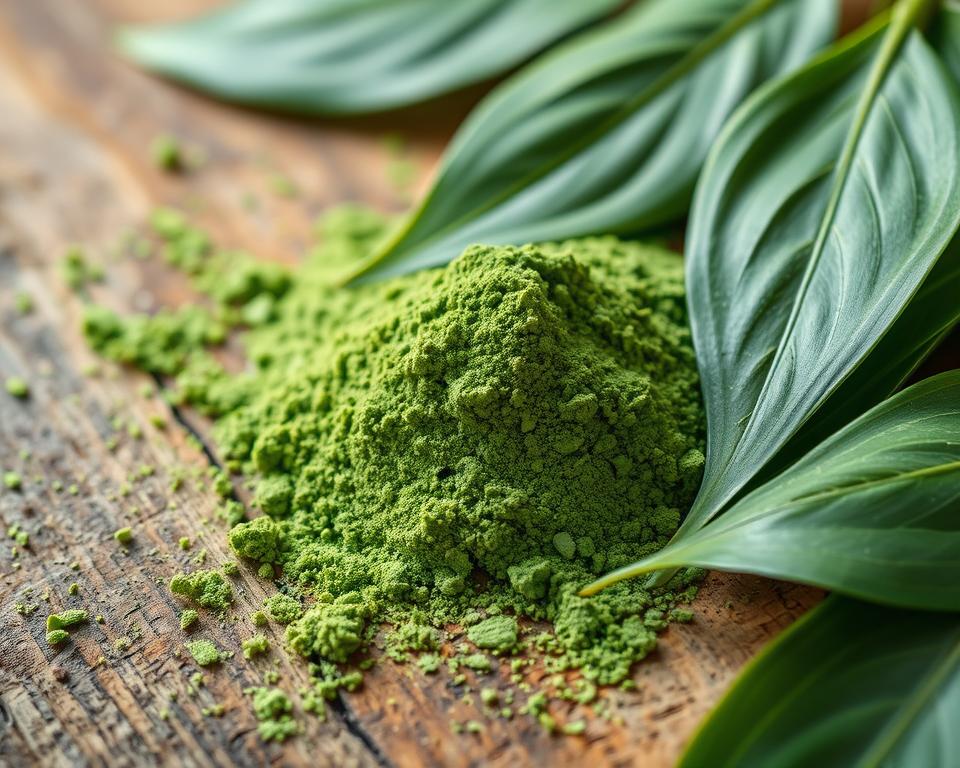
“Pandan paste and powder allow you to capture the essence of pandan without the need for fresh leaves. They’re a game-changer for anyone who loves the unique flavor profile of this tropical ingredient.”
Pandan Leaf in Drinks and Cocktails
The pandan leaf is not just for cooking. It can also make drinks and cocktails special. Its tropical aroma and flavor can be added to teas, lemonades, and even alcohol. This makes many drinks more interesting and refreshing.
One way to use pandan leaf is by making syrups or tinctures. These can be mixed into teas, juices, or cocktails. They bring out the coconut and vanilla tastes of the leaf. You can also steep the leaf in hot water to make a fragrant tea. Or, muddle it into lemonades and other drinks for a unique flavor.
For those who want to try pandan-based cocktails, there are many options. You can make new versions of classic drinks, like a pandan gin and tonic or a pandan mojito. Bartenders and mixologists are also trying out new recipes. They show how pandan leaf can add depth and complexity to drinks.
| Pandan Leaf Drink | Description |
|---|---|
| Pandan Tea | A fragrant, herbaceous tea made by steeping pandan leaves in hot water. |
| Pandan Lemonade | A refreshing lemonade with a hint of pandan flavor, created by muddling pandan leaves. |
| Pandan Mojito | A tropical twist on the classic mojito, featuring pandan-infused rum and a pandan leaf garnish. |
Looking to add a tropical touch to your tea or make a unique cocktail? The pandan leaf is a great choice. It can make many drinks better. Try out pandan-infused drinks and see how this leaf can change your favorite drinks.
Substitutes for Pandan Leaf
The pandan leaf is a special ingredient in Southeast Asian cooking. But sometimes, it’s hard to find. Luckily, there are a few substitutes that can bring some of its unique flavors to your dishes.
Vanilla extract is a common substitute. It has sweet, floral notes that remind you of pandan. But, it doesn’t quite match the pandan’s complex taste. Another choice is coconut extract, which adds a tropical flavor similar to pandan.
Using a mix of vanilla and coconut extracts can get you closer to pandan’s taste. But remember, these substitutes can’t fully replace the depth of flavor that fresh or frozen pandan leaf offers.
| Substitute | Flavor Profile | Recommended Usage |
|---|---|---|
| Vanilla Extract | Sweet, floral notes | Use 1/2 to 1 teaspoon per recipe |
| Coconut Extract | Subtle tropical essence | Use 1/2 to 1 teaspoon per recipe |
| Vanilla + Coconut Extract | Approximates pandan flavor | Use 1/4 to 1/2 teaspoon of each per recipe |
While these substitutes can help, they don’t fully capture the pandan leaf‘s unique taste and smell. The best choice is to use fresh, frozen, or dried pandan leaves for the real deal.
Pandan Leaf in Traditional Medicine
The pandan leaf is more than just a tasty ingredient. It’s also a key part of traditional medicine in Southeast Asia. People believe it has many health benefits, like fighting inflammation and infections.
For ages, pandan leaf has been used to cure many problems. It’s good for the skin, stomach, and even the lungs. Its smell and taste make it a favorite in many herbal remedies.
Even though we need more studies, early research shows pandan leaf might be very helpful. It could have properties like:
- Anti-inflammatory: It might help reduce swelling and pain.
- Antioxidant: It’s full of antioxidants that protect cells from damage.
- Antimicrobial: It could fight off infections and help wounds heal.
The pandan leaf is used in many ways in traditional medicine. It’s made into tea, used in remedies, or applied directly to the skin. It’s a valuable part of health traditions in Southeast Asia.
“The pandan leaf has been a valuable resource in traditional medicine for centuries, and its potential benefits continue to be explored by researchers and practitioners alike.”
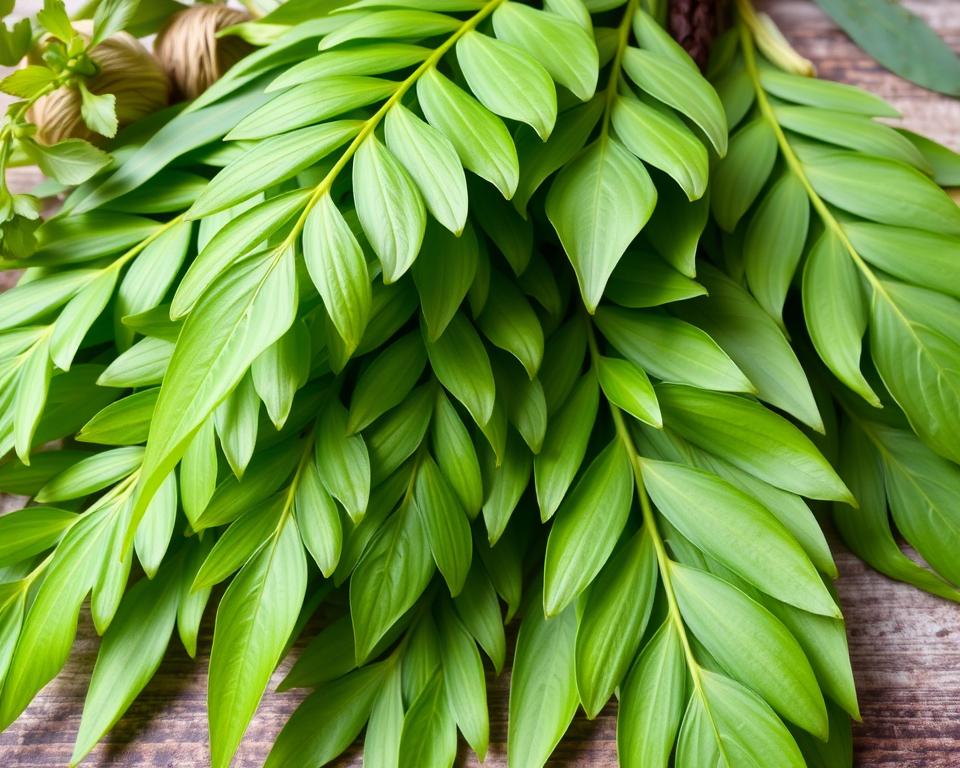
The Versatile Pandan Leaf
The pandan leaf is a standout ingredient in the world of cooking. It adds a unique aroma and flavor to dishes, from sweet to savory. This makes it a key part of many Southeast Asian cuisines.
It’s used in rice, curries, and even desserts. The pandan leaf can turn simple dishes into something special. Its scent and sweetness blend well with both sweet and savory flavors.
The pandan leaf is more than just a food item. It holds deep cultural value in Southeast Asia. It’s part of traditional cooking, rituals, and celebrations. As people around the world explore Southeast Asian flavors, the pandan leaf shines brightly.
“The pandan leaf is a true culinary chameleon, effortlessly transitioning between sweet and savory dishes, leaving an indelible mark on the flavors it touches.”
Whether you’re a pro chef or a home cook, the pandan leaf is essential. Its versatility makes it a great addition to any kitchen. It’s ready to make any dish extraordinary.
Pandan Leaf Recipes to Try
Exploring pandan leaf recipes is a fun way to enjoy its unique taste. You can make fragrant rice dishes, aromatic curries, and even decadent cakes. It’s great for both sweet and savory dishes, making your meals unforgettable.
Here are some delicious pandan leaf recipes to try:
- Pandan Coconut Rice – This rice is fragrant and creamy, with pandan leaf and coconut milk.
- Pandan Chicken Curry – A rich curry with tender chicken, coconut milk, and pandan leaf.
- Pandan Chiffon Cake – A light cake with a pandan leaf flavor, great for dessert.
- Pandan Waffles – These waffles are crispy and fluffy, with a pandan leaf twist.
“Pandan leaf is a culinary treasure that adds a unique and complex flavor to a wide range of dishes. Experimenting with its versatility can truly elevate your cooking.”
Discover the amazing aroma and taste of pandan leaf in your kitchen. From savory to sweet, there’s a pandan leaf recipe for everyone to enjoy.
Conclusion
Pandan leaf is a special ingredient with a unique flavor. It’s a key part of the culinary world. It comes from Southeast Asia and is used in many dishes, both sweet and savory.
It can turn simple ingredients into amazing dishes. If you’re new to pandan leaf or want to try something new, it’s a great choice. Its flavor and aroma can make any dish better, from rice to desserts and cocktails.
Keep exploring with pandan leaf in your cooking. Learn about its origins, health benefits, and uses. It will become a favorite in your kitchen. You’ll make dishes that are not only tasty but also memorable.
